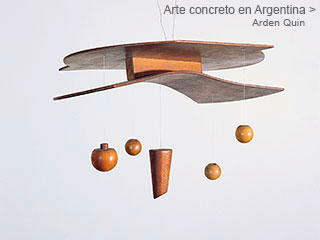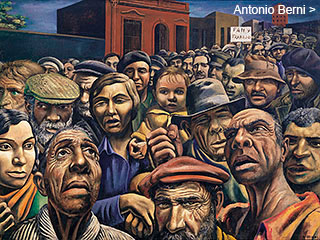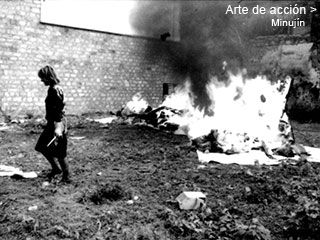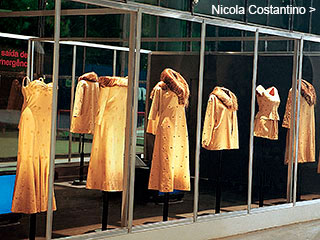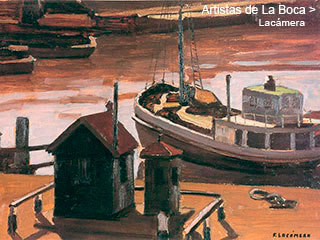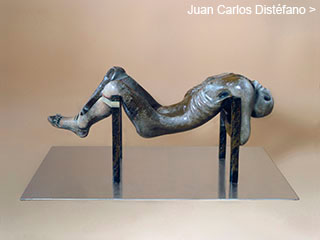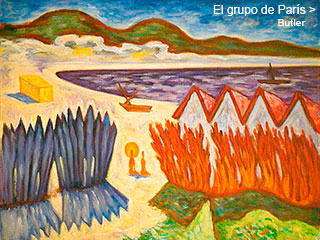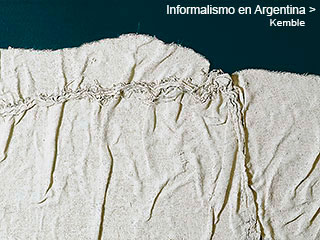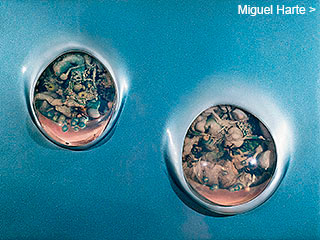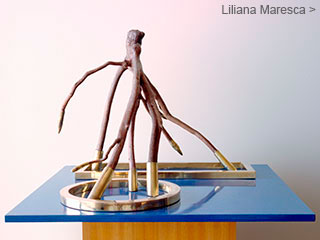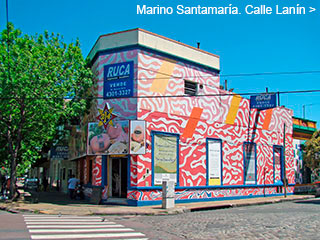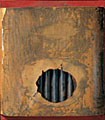Menú
Algunos dossiers
Informalism
in Argentina
in Argentina
by
Jorge López Anaya
August 2003
August 2003
Argentine Informalism incorporated processes which went against the “good taste” of the local practices. Based on the existential poetry of the time, through spontaneous gestures and the use of discarded material, it violated the limits of the traditional artistic genre and opened the road to the concept of the object, the installations and the art of action.
Wells
Luis Alberto Wells (Buenos Aires, 1939) started exhibiting together with Rogelio Polesello, in October 1958 at the Galatea Gallery. He presented a group of monoprints with textured surfaces, full of accidents and white stains that pre-announced the Informalist experience. A year later, in the months of May and June, together with Polesello and Olga López, he presented at the same Gallery paintings on paper with moderated textures, by this time, decidedly of Informalist nature.
That same year, together with two matter paintings of soft sinuosity and ploughed with spontaneous graphisms, Wells integrated the first exhibit of the Informal Movement. He soon abandoned the matter practices to start the object experience at a very early stage, where he restored the assemblage technique. On his second exhibit this Informalist group presented three pieces of work: embossed tree trunks (Collage with trunks, 150 x 150 cm), another one with tin cans (80 x 150 cm) and a painting.
In an interview with Kenneth Kemble, Wells described how he had made one of these pieces in 1959: “it is made on a piece of pressed wood, with papers used for wrapping apples glued together, painted over, followed with a construction of cardboard and pieces of wood below; this entire black line that is seen here (he points at it with his finger) is made up of match boxes set in such a way that they play with the volume and space”.
more


